- Home
- News
- General News
- Synchrotron@School...
Synchrotron@School welcomes Swedish women in science
08-09-2015
The ESRF welcomed 12 young women, all science students from Sweden, for a session of Synchrotron@School, the ESRF's outreach programme.
These female students were selected through a competition called Neutronia, organised mainly by the University of Uppsala in Sweden. Their prize consisted of a two-day immersion into the world of electrons and neutrons with activities at the ESRF and neighbouring institute the ILL.
This competition aimed at encouraging female high school students to pursue a career in science, technology, engineering and maths, areas where they are consistently under-represented today. The initiative ties in well with the ESRF's outreach programme Synchrotron@School. This programme, which has been running since 2013 thanks to a partnership with the French “Académie de Grenoble”, offers French high-school students a day of hands-on science and visits of the ESRF's beamlines and infrastructure. It is geared to show young people, male and female alike, the diversity of science careers in world-class research facilities like the ESRF.
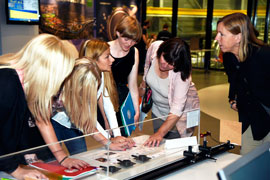 |
||
|
Hands-on science in the Visitor Centre. Credit: ESRF/C. Jarnias. |
||
This Synchrotron@School session was the opportunity for the Swedish students to meet and discuss with some of the ESRF female scientists and engineers, which included some working in the structural biology laboratories and at two of the beamlines, BM28, the XMAS CRG beamline, and ID32.
The ESRF hopes that this specific session will stimulate scientific vocations or at least will help to change the students’ perceptions and stereotypes of people working in science.
For Suzy Lidström, physicist in charge of outreach at the University of Uppsala, the ESRF's programme is fast paced and well adapted. It keeps the momentum going all through the day and helps the students to build a whole range of skills. Moreover, the girls, who may have been isolated in a physics class, out-numbered 4 to 1 by their male colleagues, have bonded and formed close friendships through their shared interest. It has helped them with their confidence and ability to assume their attraction to science or maths.
For most of the students, today was the first time they discovered a synchrotron. For Åsa, who had sought information on synchrotrons while preparing the trip, the first-hand presentations lifted the obscurity around the functioning and uses of a synchrotron. "Until now science has been very theoretical, within the classroom, but today's visit has shown me what you can do practically".
For Amanda, the visit has been inspirational and given her an opportunity to talk to people with a wide variety of occupations, all working within the same institute. She's found the day helpful for her career choice even if she is still undecided.
Frida feels consolidated in her choice to become a maths and physics teacher and Laila felt the trip had definitely swayed her towards science. "The scientists were funnier than I'd expected - they have a good sense of humour and are just normal people!"
This was an exciting event and a beautiful meeting between Synchrotron@School and Women in Science that paves the way for further outreach activities!
Related links
- XMaS inspiring women into scientific careers - publication in MaterialsToday
- The ILL
The Synchrotron@school day in pictures
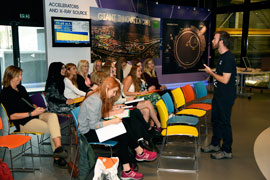 |
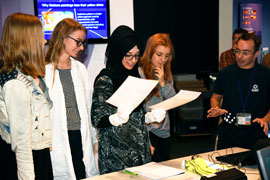 |
|
Introducing Synchrotron@school. Credit: ESRF/C. Jarnias. |
Discovering the problem to be solved. Credit: ESRF/C. Jarnias. |
 |
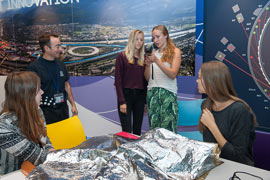 |
|
Aligning a sample for a diffraction experiment. Credit: Max Alexander. |
Studying materials with a thermal camera. Credit: Max Alexander. |
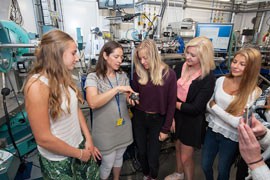 |
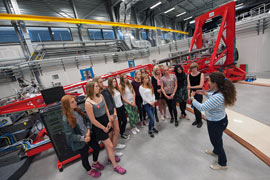 |
|
Visiting beamline BM28. Credit: Max Alexander. |
Visiting beamline ID32. Credit: Max Alexander. |
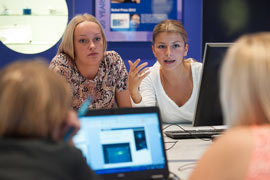 |
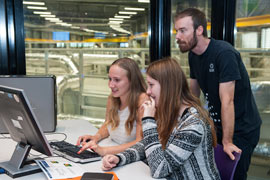 |
|
Discussing experimental results in the visitor centre. Credit: Max Alexander. |
Preparing a presentation about their experiment in the visitor centre. Credit: Max Alexander. |
Text by Kirstin Colvin
Top image: Not a selfie! Two students study a filter during a practical session. Credit: ESRF/C. Jarnias.



